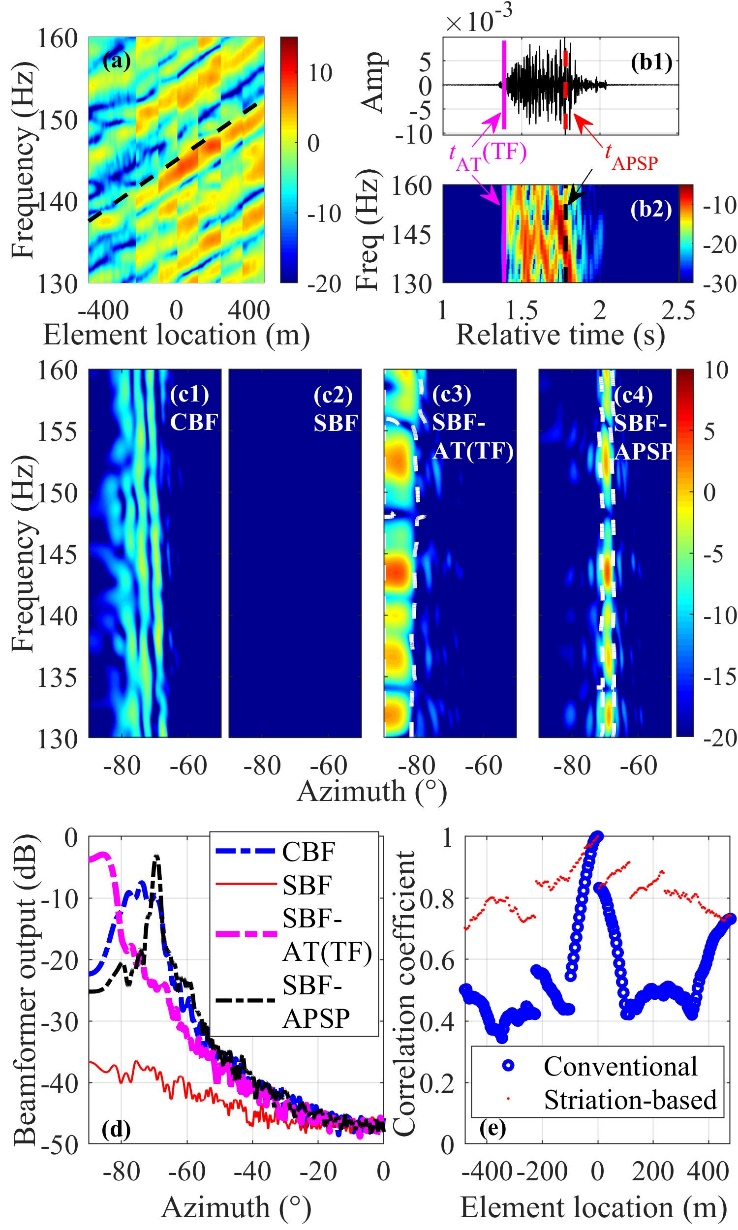For the bearing detection problem in underwater acoustics, conventional beamforming (CBF) is commonly used. However, compared to the ideal scenario of free-space plane waves, CBF faces performance degradation for actual underwater acoustic signals due to the multi-path and dispersion characteristics of underwater waveguides. Issues exist such as beam shift, broadening, splitting, output distortion, and reduced gain in applications of CBF. Solving these problems is crucial for improving the accuracy of target azimuth estimation, target resolution, and detection gain in underwater environments.
In theory, the array signal correlation is the metric most closely related to beamforming performance. The performance degradation of CBF can be explained by the decrease in array signal correlation caused by the conditions of the underwater waveguide. Therefore, in existing methods, one approach to address this issue is to suppress the adverse effects of the waveguide environment on azimuth estimation by introducing environmental knowledge, such as the matched field method. Additionally, a signal and system perspective can be utilized to restore the ideal beam pattern using deconvolution techniques. However, methods that require environmental knowledge are often challenging to use under passive detection conditions, and deconvolution-based approaches cannot directly improve the practical correlation of array signals. The problem of decreased array signal correlation becomes more prominent as the aperture of the base array increases.
To address the above issues, researchers from the Institute of Acoustics, Chinese Academy of Sciences (IACAS) applied striation-based beamforming (SBF) to the passive bearing detection problem by utilizing the array signal interference mechanism and its correlation with the signal. Compared to CBF which processes the array signals of the same frequency, SBF processes the array signals with the best correlation along the striations in element-frequency domain. By introducing time pre-compensation related to signal arrival time into the received array signals, the results indicate that accurate estimation of sound source azimuth can be achieved using SBF. Furthermore, the obtained beam response is similar to the results under ideal conditions of plane waves, effectively ensuring beam resolution and array gain.
The research findings were successfully validated on a horizontal array with a synthetic aperture of approximately 1 kilometer in shallow waters. The results show a possibility provided by SBF for underwater acoustics to obtain beamforming performance like plane wave condition. It also provides a beneficial solution to the problem of deteriorating beamforming performance in shallow-water environments and serves as a reference for optimizing underwater acoustic array signal processing and improving target localization and detection performance.

Figure. 1 The effective enhancement of array signal correlation using striation-based processing (Image by IACAS)
The research, published online in the international journal The Journal of the Acoustical Society of America, was supported by the National Natural Science Foundation of China (No.12174419, No.11804362).
Reference:
Changpeng Liu, Shihong Zhou, Yubo Qi, Performance comparison of conventional and striation-based beamformers for underwater bearing detection of pulse sources. J. Acoust. Soc. Am. 1 December 2023, 154 (6): 3955–3972. DOI: 10.1121/10.0023950.
Contact:
ZHOU Wenjia
Institute of Acoustics, Chinese Academy of Sciences, 100190 Beijing, China
E-mail: media@mail.ioa.ac.cn


